Fiber Cement Siding Issues Homeowner Complaints and Class Action Lawsuits
A True Texas Homeowner Story
It is late in the evening and your children are getting ready for bed. After tucking them in, it is now your time to relax until suddenly you hear screams from one of your children’s rooms. You run 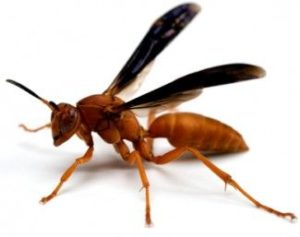 down the hall to find that a wasp has entered your home’s interior from the gap in the fiber cement siding on the exterior of your home and realize that you have an issue. You quickly remove the nearest weapon of defence, your slipper and stalk the insect to ensure the child feels safe and is not going to be attacked by the insect.
down the hall to find that a wasp has entered your home’s interior from the gap in the fiber cement siding on the exterior of your home and realize that you have an issue. You quickly remove the nearest weapon of defence, your slipper and stalk the insect to ensure the child feels safe and is not going to be attacked by the insect.
You take a few moments looking around, observing and listening soon discovering a buzzing sound inside the walls. With some more investigation, you notice that there is a small gap under the baseboard trim allowing wasps to enter into the inside of your home.
Knowing this, you now gather your flashlight to head outside to inspect your home’s exterior. Keep in mind that this a real life scenario happens repeatedly across the country that often goes unreported. We can assure you after removing many siding planks over the years we have seen this repeatedly.

In this photo you can see where the homeowner installed caulking on the fiber cement siding joints to help resolve the insect infestation issue
As you walk around the home, the buzzing gets louder and as you head towards the buzz, you notice the fiber cement siding that was installed is pulling away from the wall and red wasps (in the Houston metro area it is often often mud daubers) have been busily building nests inside the walls. Upon closer inspection, you determine there to be some fiber cement siding issues going on and needless to say you are upset and at the same time concerned about the extent of the intrusion.
You open up your computer and start your web research finding there to be quite a few complaints and issues reported from homeowners across the country regarding various issues homeowners from around the country have reported about the fiber cement siding product.
Fiber Cement Siding Manufactures and Options
There are many siding products out on the market for homeowners to choose from when it comes to re-siding their home. Some of the options include Vinyl Siding, LP SmartSide Siding a various choices of Fiber Cement Siding.
Some of the manufactures of fiber cement siding include: James Hardie siding, Allura siding, Nichiha and GAF Fiber Cement Siding. Each produces great products which include warranties running anywheres from 10 – 30 years in length, depending upon the manufacturer. One of the greatest assets of fiber cement siding is its fire resistance from outside sources entering your home.
How Is Fiber Cement Made?
Fiber Cement siding products consist of several ingredients such as: silica sand, cement and cellulose fibers (i.e. wood pulp fibers). To produce the product, first the manufacturer starts with silica sand, this is mixed in a ball mill and ground down into a fine powder. Then the moisture is removed and dried into a san like block and wood pulp is then added to give the fiber cement some bending resistance and strength. If this were not added, the fiber cement product would simply break like delicate china, it would be brittle and crack easley.
All three of these products (sand, cement and wood pulp) are then mixed together into a thick fiber cement slurry-like substance. This thick fiber cement substance is then piped into a press creating siding planks while pressing a wood grain embossment into the siding plank. The newly formed siding plank is then inserted into a high pressure oven called an autoclave to cure.
The Inherent Nature of Fiber Cement Siding
Because fiber cement siding is made of brittle ingredients, it can easily break and crack as well as shrink when exposed to moisture and temperature changes. In the photo below, you can clearly see how the siding has shrunk leaving gaps at the butt joints as well as along the lower portion of the siding lap, this is the gap which allows for bug and insect intrusion of the walls and home. One of the reasons for this separation from the homes exterior walls is that fiber cement siding is not made from wood like the 2×4’s that it is nailed to. This siding then moves at a different rate of expansion and contraction causing the natural pulling away of the nails thus causing separation.
Removal of Old Siding
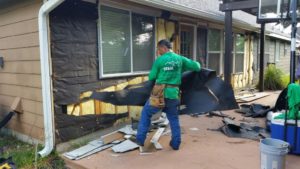
Texas Home Exteriors crew worker removing fiber cement siding
Below you can see one of our Texas Home Exteriors crew workers has been removing some of the old fiber cement siding and now pulling off the old black tar paper from the rear of this Houston Texas home where the wasps and insects were found nesting.
Wasp and Bugs Nesting Under Siding
This is not a good find at all, in the image below you can see we found where the wasp (mud daubers) and or bugs have created a nice nesting site behind the siding. This is what was creating the buzzing sound being heard by this Texas homeowner at night which he described in his own words, “it sounds like it is coming from inside the walls”, and he was right, it certainly was as as we proved and can be observed in the image.
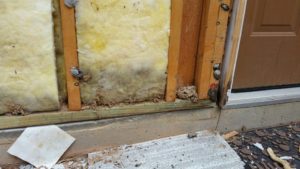
fiber cement siding gaps and bugs intrusion issue
Helpful Links and Supporting Evidence via Google Search on Fiber Cement Siding Issues and Class Action Lawsuits.
If you take some time and do your own research on the internet, you will quickly learn details about how fiber cement siding products have performed over the years and the class action lawsuits that have been filed. Though this fiber cement siding product is still on the market as one of the top siding choices, it does have it’s inherent problems after the product has been installed after a few years. You will also find some class action lawsuits that were filed related to the product, I have shared a few listed below for your reference.
Inspectapedia Fiber Cement Siding Defects
CretainTeed Fiber Cement Siding Settlement
CertainTeed Fiber Cement Siding
ClassActionNews / James Hardie Siding
ClassAction.org James Hardie Siding
James Hardie fiber cement class action lawsuit
The Old Broken Fiber Cement Siding
Because this siding is made from cement and fibers, it can easily break when bumped against, with objects hitting it and or when it is removed. The photo below displays how it breaks apart upon removed, it breaks off into small pieces like ceramic tile creating quite a mess to clean up, not to mention the dangerous silica dust that workers and crew members could be inhaling.
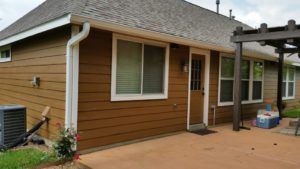
Finished LP SmartSide Siding Job Tomball TX – 50 Year Warranty By Texas Home Exteriors
SmartSide Siding A Better Siding Solution
In the photo below you can see the new siding installed that is not brittle. LP SmartSide siding is made from engineered wood and will not pull away from the wall due to the fact that it moves at the same rate as the wall framing that is also made of wood (2×4’s).
If you have fiber cement siding installed on your home and have found issues with it, you might consider what your other siding product options are, possibly something less troublesome and safer. If you have found that a class action lawsuit has been filed against the siding manufacturer, you should consider pursuing that if that product was installed on your home.
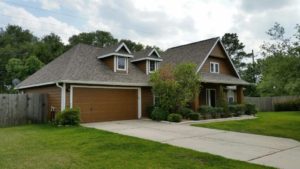
Front Of LP SmartSide (50 Year Warranty) home finished by Texas Home Exteriors Tomball TX
We have found that many homeowners are desiring a stronger siding for their homes, one of the products we as well as homeowners have been very pleased with is the LP SmartSide siding. With its incredible strength, moisture resistance and it comes with a 50-year warranty we and the homeowners we have worked with find all to be quite impressive.
Here at Texas Home Exteriors, we hope that you have found this fiber cement siding issues post informative and helpful. Please feel free to ask questions and make comments below, we look forward to hearing from you!



Hey mate, great siding post! You gave me some good pointers as well. Bart Roslin
Hi my name is Sandra and I just wanted to drop you a quick note here as I would agree with your post as my husband and I have had the Hardi fiber siding breakage experience.
Sandra,
Thanks for your comments, we will certainly agree with you. It is however one of the best siding products for fire resistance.
Thank you so much for this great case study and the support for LP SmartSide. We believe our Trim and Siding can provide the durable beauty you are looking for, while being easy to work with on the site. I think you’ve proven that here! Happy to have your partnership!
Amy,
Wow, thank you for your comments and thoughts on the LP SmartSide Siding product as a great option. We would most certainly agree with you!
Greg Kapitan
Just curious, what would the cost difference be for 1500 sq. ft. of Hardiplank vs. LP SmartSide?
Nina,
Thank you for your question on this subject as this is a great question to ask. The cost differance between the two siding products (Hardiplank and the LP SmartSide) is similar with some differences depending on the profiles that you choose. Some markets in different parts of the country might vary in pricing as well depending on availability.
Hi Greg,
I’m located in North Carolina, and trying to figure out what siding to use on my home. I’m leaning towards the smooth LP Smart Side, my only concern is that I’ve heard that it is made out of something similar to mdf, which sounds like a recipe for disaster. What are your thoughts?
Thanks.
Trevor,
Thanks for your inquiry. I understand your concern as the LP SmartSide siding is often confused with other products such as masonite. I do believe that LP did make a siding product that was made from masonite in the past.
Medium-density fibreboard also know as MDF. This is an engineered wood product that is made by breaking down hardwood or softwood residuals into wood fibres, often in a defibrator, combining it with wax and a resin binder, and forming panels by applying high temperature and pressure to manufacture the product. The problem with this product that is mainly used for interior trim becuase the fibers are so small to makes for smooth surfaces without wood grain. It is also not made the same way as the LP SmartSide siding is made with fibers that are stranded. Much larger and longer and also treated for exterior use.
If each product was placed in water, you will see how the MDF will swell as the LP SmartSide siding will not. Folks also get the LP SmartSide siding confused with OSB, oriented strand board as they look very similar on the backside.
Speaking of backside, my wife and I recently built our home in southeast Texas and used the LP SmartSide siding 12″ lap siding. This area of Texas gets nearly 4 feet of rain per year. Anyhow with new dirt and rain you get lots of mud. Having said that, we used many of the leftover siding to walk on instead of being in the mud. We still have those (3) panels in the back of our garage now as we have moved them to stop the earth from being washed away from the water cascading off of the garage roof. They are not swelling or anything. They have not cracked from being walked on becuase they are so strong. You can not do the that with fiber cement, AKA crumble-a-plank as many are now calling it.
The LP SmartSiding is not a product without some flaws, but then again none are. Nevertheless it is enjoying a great track record across the U.S. Top that off with the company backing this up with faith in their product with a 50 year (siding & trim) warranty, need I say more..
Hi. We are building a house on the coast in southeast Georgia. We need to know whether to use Hardie Board or Allura for our fiber cement siding. Our contractor wants to use Allura, but we cannot find reviews or information about Allura because they are a new company. Please help. 🙂
Saundra,
Thank you for your siding mattereal question as it is most certainly a valid one. I would recommend that you install the James Hardie (HardiePlank / Hardie Board) do to the fact that it has a known trackable reputation. Make sure that you use a good paint and install the product correctly. Best of luck to you and your new home that you are building!
Greg
My wife, and I recently bought a new manufactured home from fleetwood. It it came with Allura cement board on it for siding fleetwood homes did a crappie job of insulation and I’m not sure if allura will even honor their warranty if I have a problem.also they don’t warranty cracking during transportation. Which it did crack in numerous places so my question is if it doesn’t hold up during transport and they won’t honor their warranty than why are they selling it to manufactured home factories.
Joe,
Thank you for your comments. It is not up to a siding manufacturer to honor a warranty due or during transportation. Manufactured homes tend to move especially during transportation so this is why the siding manufacturer will not warranty it. Fiber Cement is non flexible and will easily crack during transportation thus this is why why issues can arise. LP SmartSide would have been a better choice as it is much stronger.
I work with Allura and am happy to help answer questions. We have been producing fiber cement siding in the states since 1986 and have a 50 year warranty. FC has been installed on homes since the early 1900’s with little issue. while LP is a good product, this version has been around for less than 10 years and i must be installed with gaps for it to expand. love to help in any way.
Mr. Anderson, Allura is being placed on our home yesterday and the next couple of days. How can I know that it is being installed properly? Does Allura certify installers? Is there a contact I can make to send pictures and ask questions?
I am on the board of a town home community in Minnesota. According to the builder we have Nichiha siding. The oldest building in our complex is 5 years. After just 2-3 years we have seen significant paint fading on the buildings. Some have indicated this is an alkaline issue with the Nichiha siding. I am looking for any input about paint fading/wear issues on Nichiha siding or warranty/defect issues with their siding. Thanks in advance.
S. Wiggins,
Thank you for your question as this issue has repeated itself in many areas across the country. This is what we have done in the past: after the fiber cement was installed we would use a high grade primer before painting. Regardless if the Nichiha Siding product was pre primed, we would prime it again so it would not suck the life out the paint that was installed on top of it. Also, what kind of top coat was installed over the siding? Was it builder grade paint? Hope this helps!
Greg, thanks for the response. It was all Sherwin-Williams paint. Sherwin has now recommended what you have, a primer (Loxon) and repaint with SuperPaint. I believe this will fix the problem, but the cost to the association is around $50,000 for all buildings. Redoing paint after five years was not a budgeted expense. We plan to work with the Nichiha siding company on warranty. Are you aware of any Nichiha alkaline/Ph/siding issues?
S Wiggins,
Thanks for the detailed response. The Sherwin-Williams Loxon primer is a good choice as we have used this combination in the past with fiber cement siding and had good results. No I personally am not familiar with the Nichiha siding. Wish I had a better answer for you on that. Thanks for asking and hope we can be of help.
Greg